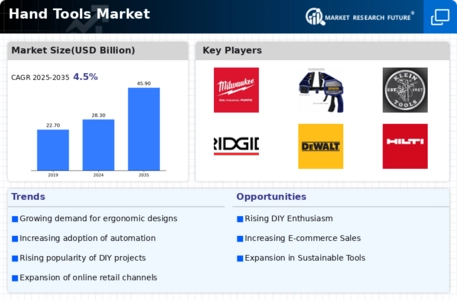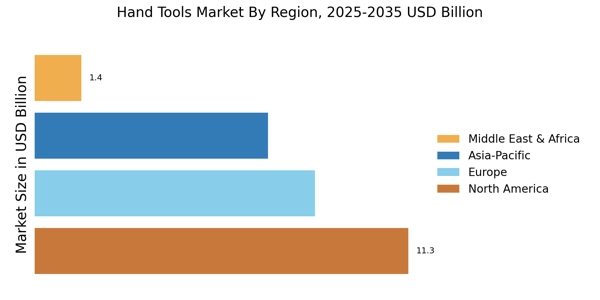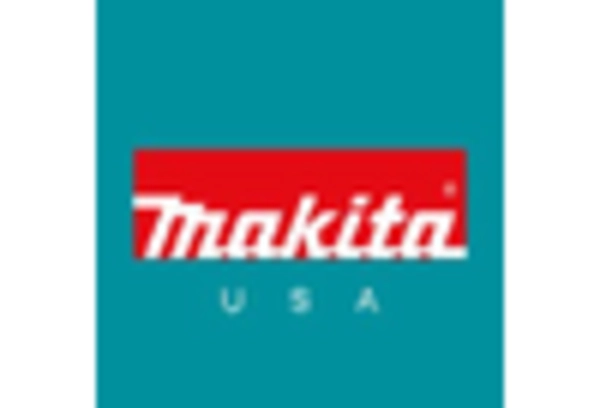Increasing Construction Activities
The Hand Tools Market is experiencing a notable surge due to the increasing construction activities across various sectors. As urbanization accelerates, the demand for residential and commercial buildings rises, leading to a higher requirement for hand tools. In 2025, the construction sector is projected to grow at a compound annual growth rate of approximately 5.5%, which directly influences the hand tools market. This growth is driven by both public and private investments in infrastructure development, necessitating a wide array of hand tools for construction, maintenance, and repair tasks. Consequently, manufacturers are focusing on producing durable and efficient hand tools to meet the evolving needs of the construction industry, thereby enhancing their market presence.
Growth in Home Improvement Projects
The Hand Tools Market is significantly benefiting from the growth in home improvement projects. As homeowners increasingly engage in renovation and remodeling activities, the demand for hand tools has escalated. In recent years, the home improvement market has expanded, with expenditures reaching over 400 billion dollars in 2025. This trend is likely to continue as consumers prioritize enhancing their living spaces. Hand tools play a crucial role in these projects, ranging from simple repairs to complex renovations. Retailers are responding by diversifying their product offerings, ensuring that a wide range of hand tools is available to cater to the varying needs of DIY enthusiasts and professional contractors alike. This dynamic environment presents opportunities for innovation and market expansion within the hand tools sector.
Rising Demand for Professional Tools
The Hand Tools Market is experiencing a rising demand for professional-grade tools, particularly among tradespeople and contractors. As the construction and maintenance sectors expand, professionals are seeking high-quality, reliable hand tools that can withstand rigorous use. This trend is reflected in the increasing sales of premium hand tools, which are projected to account for a significant share of the market by 2025. The emphasis on quality and durability is driving manufacturers to innovate and produce tools that meet the stringent requirements of professional users. Furthermore, the growing awareness of the importance of using the right tools for specific tasks is influencing purchasing decisions, leading to a more discerning consumer base in the hand tools market.
Sustainability and Eco-Friendly Products
The Hand Tools Market is increasingly influenced by sustainability and the demand for eco-friendly products. Consumers are becoming more conscious of their environmental impact, prompting manufacturers to adopt sustainable practices in their production processes. This includes using recycled materials and reducing waste during manufacturing. In 2025, it is anticipated that the market for eco-friendly hand tools will grow as consumers seek products that align with their values. Companies that prioritize sustainability are likely to enhance their brand reputation and attract environmentally conscious consumers. This shift towards sustainability not only benefits the environment but also opens new avenues for innovation within the hand tools market, as manufacturers explore alternative materials and production methods.
Technological Innovations in Tool Design
The Hand Tools Market is witnessing a transformation driven by technological innovations in tool design. Manufacturers are increasingly integrating advanced materials and ergonomic designs to enhance the functionality and user experience of hand tools. For instance, the introduction of lightweight yet durable materials has improved tool performance while reducing user fatigue. Additionally, smart tools equipped with digital features are emerging, providing users with enhanced precision and efficiency. This trend is expected to attract a new generation of consumers who value both performance and innovation. As the market evolves, companies that invest in research and development to create cutting-edge hand tools are likely to gain a competitive edge, thereby contributing to the overall growth of the hand tools market.


















Leave a Comment